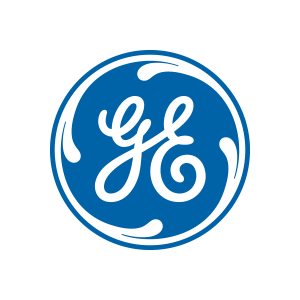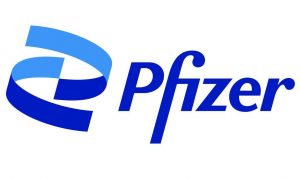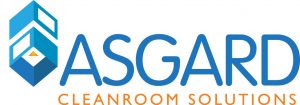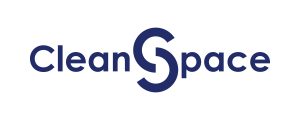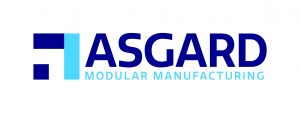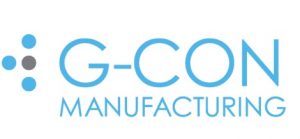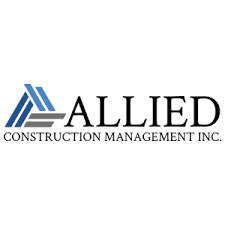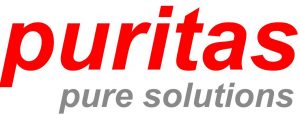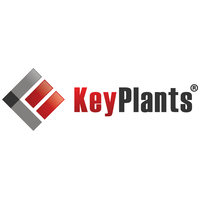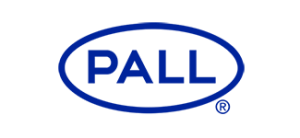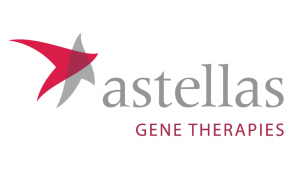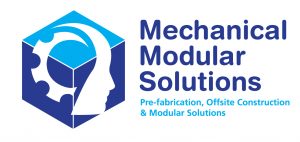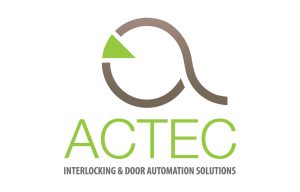A: The required air changes per hour (ACH) is determined by the ISO class to be met. In comparison, a conventional HVAC system usually makes two to four air changes per hour, whereas in a cleanroom it can range anywhere from 10 to 250 or even more.
A: A sporicide is a disinfectant that is effective against spores
A: When the floor is extended at the edges to be applied up the wall, creating a curved surface from wall to floor.
A: Step 1: Evaluate layout for material/ people flow. Step 2: Determine cleanliness classification requirement. Step 3: Determine space pressurisation for space and adjoining spaces. Step 4: Determine space supply airflow. Step 5: Determine space air exfiltration flow. Step 6: Determine space air balance. Step 7: Assess remaining variables. Step 8: Determine mechanical system layout. Step 9: Perform heating/ cooling calculations. Step 10: Agree mechanical infrastructure room space requirements based on cleanliness classification
A: High speed roll up doors help to maintain stable pressure levels, contaminants out and limits air consumption. It is possible to build airlocks with high speed doors and maintain your cleanroom in over or under pressure. Flexible PVC door curtains are pressure resistant. The superior and tight seal keeps clean air in and contaminated air out, resulting in significant energy savings and minimum air leakage.
A: A small enclosure that mounted through the cleanroom wall and allows product to be passed through efficiently. Pass thru’s cut down on personnel traffic, hence reducing contamination.
A: A unit of measurement equal to one-millionth of a meter: 0.00003937 inches.
A: The amount of light from the light source at a specific time in the future is referred to as the lamp lumen maintenance factor (LLMF).The light output from all light sources decreases over time.
A: The required air changes per hour (ACH) is determined by the ISO class to be met. In comparison, a conventional HVAC system usually makes two to four air changes per hour, whereas in a cleanroom it can range anywhere from 10 to 250 or even more.
A: ISO 14644-1:2015(E) Table A.1 - Sampling Locations related to Cleanroom Area Area of cleanroom (m2) less than or equal to Minimum number of sampling locations to be tested (NL) 2 1 4 2 6 3 8 4 10 5 24 6 28 7 32 8 36 9 52 10 56 11 64 12 68 13 72 14 76 15 104 16 108 17 116 18 148 19 156 20 192 21 232 22 276 23 352 24 436 25 636 26 1,000 27 > 1,000 See Formula (A.1) Area of cleanroom (m2) less than or equal to Minimum number of sampling locations to be tested (NL) Note 1: If the considered area falls between two values in the table, the greater of the two should be selected. Note 2: In the case of unidirectional airflow, the area may be considered as the cross section of the moving air perpendicular to the direction of the airflow. In all other cases, the area may be considered as the horizontal plan area of the cleanroom or clean zone.
A: ISO 14644-1:2015(E) Table 1 - ISO Classes of Air Cleanliness by particle concentration ISE Class Number (N) Maximum Allowable concentrations (particles/m3) for particles equal to and greater than the considered sizes, shown belowa 0,1 μm 0,2 μm 0,3 μm 0,5 μm 1 μm 5 μm 1 10b d d d d e 2 100 24b 10b d d e 3 1,000 237 102 35b d e 4 10,000 2,370 1,020 352 83b e 5 100,000 23,700 10,200 3,520 832 d, e, f 6 1,000,000 237,000 102,000 35,200 8,320 293 7 c c c 352,000 83,200 2,930 8 c c c 3,520,000 832,000 29,300 9g c c c 35,200,000 8,320,000 293,000 a All concentrations in the table cumulative, e.g. for ISO Class 5, the 10,2000 particles show at 0,3 μm include all particles equal to and greater than this size. b These concentrations will lead to large air sample volumes for classification. Sequential sampling procedure may be applied; see Annex D. c Concentration limits are no applicable in this region of the table due to very high particle concentration. d Sampling and statistical limitations for particles in low concentrations make classification inappropriate. e Sample collection limitations for both particles in low concentrations and sizes greater
A: Both standards classify a cleanroom by the number of particles found in the laboratory's air. The cleanroom classification standards FS 209E and ISO 14644-1 require specific particle count measurements and calculations to classify the cleanliness level of a cleanroom or clean area.
A: A biosafety cabinet (BSC) also called a biological safety cabinet or microbiological safety cabinet is an enclosed, ventilated laboratory workspace for safely working with materials contaminated with (or potentially contaminated with) pathogens requiring a defined biosafety level.
A: Laminar flow hoods are ventilation devices used within the cleanroom to provide an aseptic work area that helps protect both the laboratory personnel and the materials they are working with.
A: Advanced Aseptic Processing (AAP) techniques are physical barrier methods of product protection and containment that are used during manufacturing operations to separate (primarily) operators from the process. These methods are most often used during open processes or other critical process steps to ensure the product is not exposed to viable organisms and particulate contamination.Curtained cleanroom areas are also not within this definition, as curtains provide little real barrier from ingress. Only complete, rigid wall enclosures fall within the scope of AAP.
A: European Medicines Agency (EMA) is committed to enabling timely patient access to new medicines, and plays a vital role in supporting medicine development for the benefit of patients.The mission of the EMA is to foster scientific excellence in the evaluation and supervision of medicines, for the benefit of public and animal health in the European Union (EU).
A: Volume 4 of "The rules governing medicinal products in the European Union" contains guidance for the interpretation of the principles and guidelines of good manufacturing practices for medicinal products for human and veterinary use laid down in Commission Directives 91/356/EEC, as amended by Directive 2003/94/EC, and 91/412/EEC respectively.
A: EU GMP good manufacturing practices for medicinal products for human and veterinary use laid down in Commission Directives 91/356/EEC, as amended by Directive 2003/94/EC, and 91/412/EEC respectively.
A: ISO Class Average number of air changes per hour ISO 5 240 - 360 air changes per hour (unidirectional airflow) ISO 6 90 - 180 air changes per hour ISO 7 30 - 60 air changes per hour ISO 8 10 - 25 air changes per hour Conventional building 1 - 2 air changes per hour FS Cleanroom Class ISO Equivalent Class Air Change Rate 1 ISO 3 360 - 540 10 ISO 4 300 - 540 100 ISO 5 240 - 480 1000 ISO 6 150 - 240 10000 ISO 7 60 - 90 100000 ISO 8 5 - 48 Recommended Air Changes and Ceiling Coverage ISO Class Air Changes Per Hour Ceiling Coverage ISO 1 500 - 750 80 - 100% ISO 2 500 - 750 80 - 100% ISO 3 500 - 750 60 - 100% ISO 4 400 - 750 50 - 90% ISO 5 240 - 600 35 - 70% ISO 6 150 - 240 25 - 40% ISO 7 60 - 150 15 - 25% ISO 8 5 - 60 5 - 15%
A: Clean rooms are zones where contaminants in the air are highly controlled. Cleanrooms are graded based upon the purity of the air that is contained in the facility.
A: Cleanrooms are classified according to the cleanliness level of the air inside them. The cleanroom class is the level of cleanliness the room complies with, according to the quantity and size of particles per volume of air. The primary authority is the ISO classification system ISO 14644-1. This standard includes the cleanroom classes ISO 1, ISO 2, ISO 3, ISO 4, ISO 5, ISO 6, ISO 7, ISO 8 and ISO 9, with ISO 1 being the “cleanest” and ISO 9 the “dirtiest” class. The most common classes are ISO 7 and ISO 8.
A: Cleanliness Level ISO FED STD 209E Equivalent Maximum Particles / Cubic Meter 0.1 Micron 0.2 Micron 0.3 Micron 0.5 Micron 1 Micron 5 Microns Extremely Clean ISO 1 N/A 10 2 N/A N/A N/A N/A ISO 2 N/A 100 24 10 4 N/A N/A ISO 3 Class 1 1,000 237 102 35 8 N/A ISO 4 Class 10 10,000 2,370 1,020 352 83 N/A ISO 5 Class 100 100,000 23,700 10,200 3,520 832 29 ISO 6 Class 1,000 1,000,000 237,000 102,000 35,200 8,320 293 ISO 7 Class 10,000 N/A N/A N/A 352,000 83,200 2,930 ISO 8 Class 100,000 N/A N/A N/A 3,520,000 832,000 29,300 Clean ISO 9 N/A N/A N/A N/A 35,200,000 8,320,000 293,000
A: The ISO standard assigns a class ranging from ISO 1 to ISO 9, with the higher classes permitting more particulate contamination per unit volume of air. A cleanroom graded ISO 1 is permitted to contain no more than 10 particles of size greater than per 0.1 microns per cubic meter of air. A cleanroom graded ISO 2 increases this limit to 100 or fewer particles of size greater than per 0.1 microns per cubic meter of air. In addition, limits for concentrations of particles of 0.2 microns and 0.3 microns are added. Typically, as the ISO class number increases, the stated limits of particle concentration step up by a factor of 10 with each higher ISO class, and larger particle size contaminants are added to the standard limits.
A: ISO 14644-1:2015 specifies the classification of air cleanliness in terms of concentration of airborne particles in cleanrooms and clean controlled environments. Classification of air cleanliness by particle concentration.
A: ISO 14644 is the international standard used to design, construct, validate and operate a cleanroom. The standard was first published in 1999, and replaced the former US Federal Standard 209E in 2001. The Standard ISO 14644 is composed of the following parts: ISO 14644-1: Classification of air cleanliness ISO/DIS 14644-1.: Classification of air cleanliness by particle concentration ISO 14644-2: Specifications for testing and monitoring to prove continued compliance with ISO 14644-1 ISO/DIS 14644-2.2: Monitoring to provide evidence of cleanroom performance related to air cleanliness by particle concentration ISO 14644-3: Test Methods ISO 14644-4: Design, Construction, and Start-up ISO 14644-5: Operations ISO 14644-6: Vocabulary ISO 14644-7: Separative devices (clean air hoods, gloveboxes, isolators and minienvironments ISO 14644-8: Classification of airborne molecular contamination ISO 14644-9: Classification of surface particle cleanliness ISO 14644-10: Classification of Surface Cleanliness by Chemical Concentration ISO 14644-12: Classification of Air Cleanliness by Nanoscale Particle Concentration
A: The International Organization for Standardisation (ISO) is an international standard-setting body composed of representatives from various national standards organizations. Founded on 23 February 1947, the organization promotes worldwide proprietary, industrial and commercial standards.ISO has a series of standards dedicated to clean rooms, outlining the practices and procedures required to manage the risk of contamination.
A: An enclosed chamber designed to clean personnel and their garments of contamination, prior to entering the cleanroom, by means of high velocity of air jets.
A: A room attached to the Cleanroom. This room has interlocking doors and its function is to act as a buffer zone between the cleanroom and the outside atmosphere, during the transfer of material or personnel. It helps keep the cleanroom pressurised and free from infiltrating dirt.
A: Cleanrooms and associated controlled environments provide for the control of airborne contamination to levels appropriate for accomplishing contamination-sensitive activities. Products and processes that benefit from the control of airborne contamination include those in such industries as aerospace, microelectronics, pharmaceuticals, medical devices, healthcare and food.
A: A sporicide is a disinfectant that is effective against spores
A: An effective cleaning and disinfection program in controlled areas is critical to maintain product quality and safety in the pharmaceutical manufacturing industry.
A: When the floor is extended at the edges to be applied up the wall, creating a curved surface from wall to floor.
A: Step 1: Evaluate layout for material/ people flow. Step 2: Determine cleanliness classification requirement. Step 3: Determine space pressurisation for space and adjoining spaces. Step 4: Determine space supply airflow. Step 5: Determine space air exfiltration flow. Step 6: Determine space air balance. Step 7: Assess remaining variables. Step 8: Determine mechanical system layout. Step 9: Perform heating/ cooling calculations. Step 10: Agree mechanical infrastructure room space requirements based on cleanliness classification
A: High speed roll up doors help to maintain stable pressure levels, contaminants out and limits air consumption. It is possible to build airlocks with high speed doors and maintain your cleanroom in over or under pressure. Flexible PVC door curtains are pressure resistant. The superior and tight seal keeps clean air in and contaminated air out, resulting in significant energy savings and minimum air leakage.
A: Interlocked doors support good cleanroom entry and exit practices by only allowing one door to open at a time, preserving clean room integrity.
A: A small enclosure that mounted through the cleanroom wall and allows product to be passed through efficiently. Pass thru’s cut down on personnel traffic, hence reducing contamination.
A: Located at the cleanroom or airshower entrance, sticky mats are multiple layers of treated film with adhesive to clean shoe bottoms and sides before entering the room.
A: These are garments made of synthetic fabrics such as Nylon, Dacron, Tyvek and others. They are lint free and limit contamination from personnel.
A: A unit of measurement equal to one-millionth of a meter: 0.00003937 inches.
A: Particle size is the maximum dimension of the particle. Linear measure used for fibrous particles and diameter used for spherical particles.
A: Monitoring to provide evidence of cleanroom performance related to air cleanliness by particle concentration, provide the framework for classifying and monitoring the cleanliness of the air in cleanrooms. ISO has a series of standards dedicated to clean rooms, outlining the practices and procedures required to manage the risk of contamination.
A: The number of times a cleanroom can completely replace its air volume within an hour.Cleanrooms employ air filtration to limit the particles in the environment air. Typically, this is through the use of either a highly efficient particulate air (HEPA) or ultra-low particulate air (ULPA) filter. These filters can remove roughly 99.9 percent of all microparticles in room air by applying either laminar air flow or turbulent air flow techniques to the environment air.
A: Unidirectional airflow is controlled airflow through the entire cross-section of a clean zone with a steady velocity and approximately parallel streamlines, this type of airflow results in a directed transport of particles from the clean zone.Cleanrooms employing laminar air flow are typically referred to as unidirectional airflow cleanrooms.Unidirectional airflow is a way of ensuring air flows in only one direction, lessening the possibility of particles being kicked around and landing in your cleanroom.Laminar air flow refers to air that flows in a straight, unimpeded path. Unidirectional flow is maintained in cleanrooms through the use of laminar air flow hoods that direct air jets downward in a straight path, as well as cleanroom architecture that ensures turbulence is lessened. Laminar air flow utilizes HEPA filters to filter and clean all air entering the environment. Laminar filters are often composed of stainless steel or other non-shed materials to ensure the number of particles that enter the facility remains low. These filters usually compose roughly 80 percent of the ceiling space. Cleanrooms employing laminar air flow are typically referred to as Unidirectional Airflow Cleanrooms.
A: Non-unidirectional airflow cleanrooms utilise turbulent airflow systems to clean particulate air and maintain a clean environment. The airflow characteristics in a non-unidirectional flow cleanroom are complex, compared with a unidirectional flow cleanroom. Non-unidirectional airflow cleanrooms utilize turbulent airflow systems to clean particulate air and maintain a clean environment. While laminar air flow filters are often a component of turbulent airflow systems, they are not the only systems employed. The entire enclosure is designed to use laminar flow and random, non-specific velocity filters to keep the air particle-free. Turbulent airflow can cause particle movement that can be difficult to separate from the rest of the air, but non-unidirectional airflow systems count on this random movement to move particles from the air through the filter.
A: CFM stands for cubic feet per minute
A: CFM is an abbreviation for cubic feet per minute and it is a measurement of the velocity at which air flows into the sample probe.
A: A unit of measurement equal to one-millionth of a meter: 0.00003937 inches or one thousandth of a millimetre.
A: Bioburden is the number of bacteria living on an un-sterilised surface.
A: A biocide is a disinfectant with a broad spectrum of activity, especially against bacteria and fungi
A: Highly efficient particulate air (HEPA) filter, these filters can remove roughly 99.9 percent of all microparticles in room air by applying either laminar air flow or turbulent air flow techniques to the environment air.
A: Ultra-low particulate air (ULPA) filter, capable of filtering out 0.12 micron particles or larger ULPA filters operate with 99.9999% efficiency.These filters can remove roughly 99.9 percent of all microparticles in room air by applying either laminar air flow or turbulent air flow techniques to the environment air.
A: Dispersed Oil Particulate testing is also known as filter integrity testing. It is the process in which the integrity of your High Efficiency Particulate Air (HEPA) or Ultra Low Penetration Air filter (ULPA) is challenged through the introduction of particulates and measurement of the output.
A: A fan filter unit is a motorised unit which supplies clean, filtered air to a cleanroom.
A: The amount of light from the light source at a specific time in the future is referred to as the lamp lumen maintenance factor (LLMF).The light output from all light sources decreases over time.
A: LEDs reduce the thermal load of a cold storage facility. The thermal load is the amount of energy a facility needs to add or remove in order to keep the temperature of the space within acceptable levels. Cold Storages facilities must keep the temperatures extremely low to preserve all items in their facilities. While LEDs do produce heat, the amount that they produce is negligible. For all commercial, industrial and cold storage lighting where low temperatures exist, LED is an ideal light source. LED lighting is the fact that LEDs are more efficient the colder the temperature. LEDs have a much higher resistance to cold temperatures compared to fluorescent and metal halide lights. Cold storage facilities maintain extremely low temperatures in order to preserve foods such as meat, vegetables and fruit. Cold storage is used for preserving medicines, bloods and a variety of pharmaceutical products.
A: When planning the lighting layout for a bedroom or bathroom for at risk patients, it is important to install such lighting that will eliminate points where a cord, rope, or bed sheet can be looped or tied to, in order to create a point of ligature, which may result in self harm or in extreme cases, loss of life. Most lights that are considered standard for a bedroom or a bathroom may pose a risk of ligature and therefore alternate products must be used in order to achieve the same function yet provide a safe environment for both patients and staff.
A: Zone 0 or zone 20 - category 1 equipment Zone 1 or zone 21 - category 2 equipment Zone 2 or zone 22 - category 3 equipment
A: Ex Zones or Hazardous Area Zones are classified on the basis of the frequency and duration of the presence of an explosive atmosphere. Gases, vapours and mists. Zone 0 is an area in which an explosive atmosphere in the form of gas, vapour or mist is present continuously or for long periods of time. Zone 1 is an area in which an explosive atmosphere in the form of gas, vapour or mist is present occasionally. Zone 2 is an area in which an explosive atmosphere in the form of gas, vapour or mist is present for a short period of time only. For dusts, the zone classifications are: Zone 20 A place in which an explosive atmosphere in the form of a cloud of combustible dust in air is present continuously, or for long periods or frequently. Zone 21 A place in which an explosive atmosphere in the form of a cloud of combustible dust in air is likely to occur in normal operation occasionally. Zone 22 A place in which an explosive atmosphere in the form of a cloud of combustible dust in air is not likely to occur in normal operation but, if it does occur, will persist
A: On first start up, batteries need to be charged for a full 24 hours and then put on emergency test for 3 hours to drain them. Normal power up can then be performed. Testing should be carried out in accordance with I.S. 3217:2013 and involve a systematic schedule of testing. Monthly: The period of simulated failure should be sufficient for the purpose of this test while minimising damage to the system components. (30secs). During this period, all luminaires and signs shall be checked to ensure that they are clean and functioning correctly. Quarterly: During this test, each emergency light is illuminated from its battery source for 30 minutes. Annually: During this test, each emergency light is illuminated from its battery source for 3 hours. All fittings are examined to ensure that they are functioning correctly. A log book is kept, checked and filled out as appropriate and a certificate of testing is issued on completion.
A: Colour rendering index (CRI) describes how an LED light source makes the colour of an object appear to human eyes and how well subtle variations in colour shades are revealed. The (CRI) of an LED is a scale from 0% to 100% indicating how accurate an LED light source is at rendering colour when compared to a ""reference"" light source. The higher the (CRI) value, the better the colour rendering. LEDs with a (CRI) of 85 to 90 are considered good. LEDs with a (CRI) of 90 or higher are excellent. It is important to note that (CRI) is independent of colour temperature.
A: The IK rating is a code which is used to measure the durability of a specific fixture as well as the amount of impact it can withstand. IK ratings help classify products by their resistance to impacts (kinetic energy). A fixtures IK rating is important and relevant when choosing a fixture based on the environment in which it will be used. Analysing the risk of impact is one component in deciding what fixture to use based on its IK rating. For areas of low risk an IK rating of IK07 and below is normally enough. IK08 and above is recommended for fixtures that bare a potential risk of impact, such as public areas internal and external, schools, construction sites and portable equipment.
A: IP or Ingress Protection Rating are used to define levels of sealing effectiveness of products against intrusion of foreign bodies and moisture. Ingress: The unwanted introduction of water, foreign bodies, contaminants, etc. The numbers that follow IP each have a specific meaning. The first number indicates the degree of ingress protection from foreign bodies. The second number indicates the level of protection from moisture.
A: UV rays are a form of electromagnetic radiation that propagate through space, and belong in the same family as x-rays, micro-waves, radio waves, infra-red (heat) and visible light rays. Visible light is the only part of the spectrum that humans can ‘see’ as our eyes have evolved to adapt to this light, primarily due to its abundance on the surface of the earth. UV rays are alongside visible light on the spectrum but have shorter wavelength (Wavelength is the distance between successive waves). The spectrum is divided into different bands based on their properties. UV rays exists from approximately 100nm to 400nm.
A: Rated lumen-maintenance life refers to the elapsed operating time over which an LED light source will maintain the percentage (p) of its initial light output. Rated lumen-maintenance life is measured in hours with the percentage of light output denoted as (Lp).
A: The rated life of a light source is basically an estimate of average operational life. The statistical measurement for the rated life is designated (Bp) and is measured in hours, where (p) is a percentage. For example, a B10 rated life of 1,000 hours means that 10% of the tested products have failed while 90% have lasted 1,000 hours.
A: Unique UV free LED produces no damage to Vitamin D molecules with exposure up to 300 hours. This allows for a variety of production environment applications such as Vitamin D and semi-conductors. Dispense with traditional cumbersome light killing filters and still have crisp high-quality white light. UV filters completely eliminated. Light levels increased. From 350lux (Fluorescent) up to 750lux (LED). From dull Orange to Crisp White light Maintenance costs reduced. Available in an easy fit retro-fit kit. No need to breach the GMP environment while upgrading. Cleanroom LED retro-fit plates and drivers can be installed without removing the existing fixture from the ceiling. Retrofit kit keeps upgrade costs down by reusing existing fixtures.
A: The most important component is the LED chip itself, also known as the die.They are made of a semiconductor material with a negative and positive terminal and are thin and rectangular in shape. Most chips used in LED manufacturing are InGaN chips (Indium Gallium Nitride) that emit a blue coloured light with a wavelength of 450-460 nanometers, using about 3 volts. LED chips are the dominant factor in determining light quality. The chips have various ratings for brightness, emitting wavelength, and voltage. When an LED chip is connected to an electrical source and a current passes through the chip, light of a certain colour is emitted.There are no commercially viable ways for an LED chip to produce white light. Therefore, the most cost effective way to create white light is to use LED phosphors, chemical powders which convert blue light into other wavelengths, turning the blue light into what we perceive as white light through what is called phosphor conversion (PC). Other phosphors can also be mixed in order to create various lighting distributions.
A: When selecting the correct lighting for a clean room environment it is important to consider the following: Future energy costs. Consider lighting with very low maintenance, hence avoiding unnecessary production downtime and labour costs. Choose lighting to achieve the optimum lux levels required. Select lighting that can be installed quickly and easily, minimising cleanroom contamination.
A: Where the directional source efficacy and optical efficacy can be improved. Such as downlights, troffers, flood lights and street lights. Where energy and maintenance costs are high. Applications that benefit from “white light” and improved uniformity such as warehousing, street and area lights. Where there are environmental constraints, such as mercury restrictions, light pollution or green building requirements. Applications involving cold temperatures, such as cold storage and outdoor locations like parking lots, roads and service stations. Applications that need instant-on/off lights that are activated by occupancy sensors or security situations.
A: The primary source of UV radiation on earth is from the sun. It is also emitted naturally from incandescent effect in halogen lamps and is created inside fluorescent lamps before the phosphor coating changes it to visible light that we see. UV is also emitted in tanning booths and some welding arcs.
A: The amount of light from the light source at a specific time in the future is referred to as the lamp lumen maintenance factor (LLMF).The light output from all light sources decreases over time.
A: A biocide is a disinfectant with a broad spectrum of activity, especially against bacteria and fungi
A: Highly efficient particulate air (HEPA) filter, these filters can remove roughly 99.9 percent of all microparticles in room air by applying either laminar air flow or turbulent air flow techniques to the environment air.
A: Ultra-low particulate air (ULPA) filter, capable of filtering out 0.12 micron particles or larger ULPA filters operate with 99.9999% efficiency.These filters can remove roughly 99.9 percent of all microparticles in room air by applying either laminar air flow or turbulent air flow techniques to the environment air.
A: Dispersed Oil Particulate testing is also known as filter integrity testing. It is the process in which the integrity of your High Efficiency Particulate Air (HEPA) or Ultra Low Penetration Air filter (ULPA) is challenged through the introduction of particulates and measurement of the output.
A: A fan filter unit is a motorised unit which supplies clean, filtered air to a cleanroom.
A: Step 1: Evaluate layout for material/ people flow. Step 2: Determine cleanliness classification requirement. Step 3: Determine space pressurisation for space and adjoining spaces. Step 4: Determine space supply airflow. Step 5: Determine space air exfiltration flow. Step 6: Determine space air balance. Step 7: Assess remaining variables. Step 8: Determine mechanical system layout. Step 9: Perform heating/ cooling calculations. Step 10: Agree mechanical infrastructure room space requirements based on cleanliness classification
A: When the floor is extended at the edges to be applied up the wall, creating a curved surface from wall to floor.
A: UV rays are a form of electromagnetic radiation that propagate through space, and belong in the same family as x-rays, micro-waves, radio waves, infra-red (heat) and visible light rays. Visible light is the only part of the spectrum that humans can ‘see’ as our eyes have evolved to adapt to this light, primarily due to its abundance on the surface of the earth. UV rays are alongside visible light on the spectrum but have shorter wavelength (Wavelength is the distance between successive waves). The spectrum is divided into different bands based on their properties. UV rays exists from approximately 100nm to 400nm.
A: The primary source of UV radiation on earth is from the sun. It is also emitted naturally from incandescent effect in halogen lamps and is created inside fluorescent lamps before the phosphor coating changes it to visible light that we see. UV is also emitted in tanning booths and some welding arcs.
A: Where the directional source efficacy and optical efficacy can be improved. Such as downlights, troffers, flood lights and street lights. Where energy and maintenance costs are high. Applications that benefit from “white light” and improved uniformity such as warehousing, street and area lights. Where there are environmental constraints, such as mercury restrictions, light pollution or green building requirements. Applications involving cold temperatures, such as cold storage and outdoor locations like parking lots, roads and service stations. Applications that need instant-on/off lights that are activated by occupancy sensors or security situations.
A: When selecting the correct lighting for a clean room environment it is important to consider the following: Future energy costs. Consider lighting with very low maintenance, hence avoiding unnecessary production downtime and labour costs. Choose lighting to achieve the optimum lux levels required. Select lighting that can be installed quickly and easily, minimising cleanroom contamination.
A: The most important component is the LED chip itself, also known as the die.They are made of a semiconductor material with a negative and positive terminal and are thin and rectangular in shape. Most chips used in LED manufacturing are InGaN chips (Indium Gallium Nitride) that emit a blue coloured light with a wavelength of 450-460 nanometers, using about 3 volts. LED chips are the dominant factor in determining light quality. The chips have various ratings for brightness, emitting wavelength, and voltage. When an LED chip is connected to an electrical source and a current passes through the chip, light of a certain colour is emitted.There are no commercially viable ways for an LED chip to produce white light. Therefore, the most cost effective way to create white light is to use LED phosphors, chemical powders which convert blue light into other wavelengths, turning the blue light into what we perceive as white light through what is called phosphor conversion (PC). Other phosphors can also be mixed in order to create various lighting distributions.
A: Unique UV free LED produces no damage to Vitamin D molecules with exposure up to 300 hours. This allows for a variety of production environment applications such as Vitamin D and semi-conductors. Dispense with traditional cumbersome light killing filters and still have crisp high-quality white light. UV filters completely eliminated. Light levels increased. From 350lux (Fluorescent) up to 750lux (LED). From dull Orange to Crisp White light Maintenance costs reduced. Available in an easy fit retro-fit kit. No need to breach the GMP environment while upgrading. Cleanroom LED retro-fit plates and drivers can be installed without removing the existing fixture from the ceiling. Retrofit kit keeps upgrade costs down by reusing existing fixtures.
A: The rated life of a light source is basically an estimate of average operational life. The statistical measurement for the rated life is designated (Bp) and is measured in hours, where (p) is a percentage. For example, a B10 rated life of 1,000 hours means that 10% of the tested products have failed while 90% have lasted 1,000 hours.
A: Rated lumen-maintenance life refers to the elapsed operating time over which an LED light source will maintain the percentage (p) of its initial light output. Rated lumen-maintenance life is measured in hours with the percentage of light output denoted as (Lp).
A: Bioburden is the number of bacteria living on an un-sterilised surface.
A: IP or Ingress Protection Rating are used to define levels of sealing effectiveness of products against intrusion of foreign bodies and moisture. Ingress: The unwanted introduction of water, foreign bodies, contaminants, etc. The numbers that follow IP each have a specific meaning. The first number indicates the degree of ingress protection from foreign bodies. The second number indicates the level of protection from moisture.
A: The IK rating is a code which is used to measure the durability of a specific fixture as well as the amount of impact it can withstand. IK ratings help classify products by their resistance to impacts (kinetic energy). A fixtures IK rating is important and relevant when choosing a fixture based on the environment in which it will be used. Analysing the risk of impact is one component in deciding what fixture to use based on its IK rating. For areas of low risk an IK rating of IK07 and below is normally enough. IK08 and above is recommended for fixtures that bare a potential risk of impact, such as public areas internal and external, schools, construction sites and portable equipment.
A: Colour rendering index (CRI) describes how an LED light source makes the colour of an object appear to human eyes and how well subtle variations in colour shades are revealed. The (CRI) of an LED is a scale from 0% to 100% indicating how accurate an LED light source is at rendering colour when compared to a ""reference"" light source. The higher the (CRI) value, the better the colour rendering. LEDs with a (CRI) of 85 to 90 are considered good. LEDs with a (CRI) of 90 or higher are excellent. It is important to note that (CRI) is independent of colour temperature.
A: On first start up, batteries need to be charged for a full 24 hours and then put on emergency test for 3 hours to drain them. Normal power up can then be performed. Testing should be carried out in accordance with I.S. 3217:2013 and involve a systematic schedule of testing. Monthly: The period of simulated failure should be sufficient for the purpose of this test while minimising damage to the system components. (30secs). During this period, all luminaires and signs shall be checked to ensure that they are clean and functioning correctly. Quarterly: During this test, each emergency light is illuminated from its battery source for 30 minutes. Annually: During this test, each emergency light is illuminated from its battery source for 3 hours. All fittings are examined to ensure that they are functioning correctly. A log book is kept, checked and filled out as appropriate and a certificate of testing is issued on completion.
A: Ex Zones or Hazardous Area Zones are classified on the basis of the frequency and duration of the presence of an explosive atmosphere. Gases, vapours and mists. Zone 0 is an area in which an explosive atmosphere in the form of gas, vapour or mist is present continuously or for long periods of time. Zone 1 is an area in which an explosive atmosphere in the form of gas, vapour or mist is present occasionally. Zone 2 is an area in which an explosive atmosphere in the form of gas, vapour or mist is present for a short period of time only. For dusts, the zone classifications are: Zone 20 A place in which an explosive atmosphere in the form of a cloud of combustible dust in air is present continuously, or for long periods or frequently. Zone 21 A place in which an explosive atmosphere in the form of a cloud of combustible dust in air is likely to occur in normal operation occasionally. Zone 22 A place in which an explosive atmosphere in the form of a cloud of combustible dust in air is not likely to occur in normal operation but, if it does occur, will persist
A: Zone 0 or zone 20 - category 1 equipment Zone 1 or zone 21 - category 2 equipment Zone 2 or zone 22 - category 3 equipment
A: When planning the lighting layout for a bedroom or bathroom for at risk patients, it is important to install such lighting that will eliminate points where a cord, rope, or bed sheet can be looped or tied to, in order to create a point of ligature, which may result in self harm or in extreme cases, loss of life. Most lights that are considered standard for a bedroom or a bathroom may pose a risk of ligature and therefore alternate products must be used in order to achieve the same function yet provide a safe environment for both patients and staff.
A: LEDs reduce the thermal load of a cold storage facility. The thermal load is the amount of energy a facility needs to add or remove in order to keep the temperature of the space within acceptable levels. Cold Storages facilities must keep the temperatures extremely low to preserve all items in their facilities. While LEDs do produce heat, the amount that they produce is negligible. For all commercial, industrial and cold storage lighting where low temperatures exist, LED is an ideal light source. LED lighting is the fact that LEDs are more efficient the colder the temperature. LEDs have a much higher resistance to cold temperatures compared to fluorescent and metal halide lights. Cold storage facilities maintain extremely low temperatures in order to preserve foods such as meat, vegetables and fruit. Cold storage is used for preserving medicines, bloods and a variety of pharmaceutical products.
A: A sporicide is a disinfectant that is effective against spores
A: An effective cleaning and disinfection program in controlled areas is critical to maintain product quality and safety in the pharmaceutical manufacturing industry.
A: High speed roll up doors help to maintain stable pressure levels, contaminants out and limits air consumption. It is possible to build airlocks with high speed doors and maintain your cleanroom in over or under pressure. Flexible PVC door curtains are pressure resistant. The superior and tight seal keeps clean air in and contaminated air out, resulting in significant energy savings and minimum air leakage.
A: Interlocked doors support good cleanroom entry and exit practices by only allowing one door to open at a time, preserving clean room integrity.
A: A small enclosure that mounted through the cleanroom wall and allows product to be passed through efficiently. Pass thru’s cut down on personnel traffic, hence reducing contamination.
A: Located at the cleanroom or airshower entrance, sticky mats are multiple layers of treated film with adhesive to clean shoe bottoms and sides before entering the room.
A: These are garments made of synthetic fabrics such as Nylon, Dacron, Tyvek and others. They are lint free and limit contamination from personnel.
A: Advanced Aseptic Processing (AAP) techniques are physical barrier methods of product protection and containment that are used during manufacturing operations to separate (primarily) operators from the process. These methods are most often used during open processes or other critical process steps to ensure the product is not exposed to viable organisms and particulate contamination.Curtained cleanroom areas are also not within this definition, as curtains provide little real barrier from ingress. Only complete, rigid wall enclosures fall within the scope of AAP.
A: Cleanrooms and associated controlled environments provide for the control of airborne contamination to levels appropriate for accomplishing contamination-sensitive activities. Products and processes that benefit from the control of airborne contamination include those in such industries as aerospace, microelectronics, pharmaceuticals, medical devices, healthcare and food.
A: A room attached to the Cleanroom. This room has interlocking doors and its function is to act as a buffer zone between the cleanroom and the outside atmosphere, during the transfer of material or personnel. It helps keep the cleanroom pressurised and free from infiltrating dirt.
A: An enclosed chamber designed to clean personnel and their garments of contamination, prior to entering the cleanroom, by means of high velocity of air jets.
A: The International Organization for Standardisation (ISO) is an international standard-setting body composed of representatives from various national standards organizations. Founded on 23 February 1947, the organization promotes worldwide proprietary, industrial and commercial standards.ISO has a series of standards dedicated to clean rooms, outlining the practices and procedures required to manage the risk of contamination.
A: ISO 14644 is the international standard used to design, construct, validate and operate a cleanroom. The standard was first published in 1999, and replaced the former US Federal Standard 209E in 2001. The Standard ISO 14644 is composed of the following parts: ISO 14644-1: Classification of air cleanliness ISO/DIS 14644-1.: Classification of air cleanliness by particle concentration ISO 14644-2: Specifications for testing and monitoring to prove continued compliance with ISO 14644-1 ISO/DIS 14644-2.2: Monitoring to provide evidence of cleanroom performance related to air cleanliness by particle concentration ISO 14644-3: Test Methods ISO 14644-4: Design, Construction, and Start-up ISO 14644-5: Operations ISO 14644-6: Vocabulary ISO 14644-7: Separative devices (clean air hoods, gloveboxes, isolators and minienvironments ISO 14644-8: Classification of airborne molecular contamination ISO 14644-9: Classification of surface particle cleanliness ISO 14644-10: Classification of Surface Cleanliness by Chemical Concentration ISO 14644-12: Classification of Air Cleanliness by Nanoscale Particle Concentration
A: ISO 14644-1:2015 specifies the classification of air cleanliness in terms of concentration of airborne particles in cleanrooms and clean controlled environments. Classification of air cleanliness by particle concentration.
A: The ISO standard assigns a class ranging from ISO 1 to ISO 9, with the higher classes permitting more particulate contamination per unit volume of air. A cleanroom graded ISO 1 is permitted to contain no more than 10 particles of size greater than per 0.1 microns per cubic meter of air. A cleanroom graded ISO 2 increases this limit to 100 or fewer particles of size greater than per 0.1 microns per cubic meter of air. In addition, limits for concentrations of particles of 0.2 microns and 0.3 microns are added. Typically, as the ISO class number increases, the stated limits of particle concentration step up by a factor of 10 with each higher ISO class, and larger particle size contaminants are added to the standard limits.
A: Cleanliness Level ISO FED STD 209E Equivalent Maximum Particles / Cubic Meter 0.1 Micron 0.2 Micron 0.3 Micron 0.5 Micron 1 Micron 5 Microns Extremely Clean ISO 1 N/A 10 2 N/A N/A N/A N/A ISO 2 N/A 100 24 10 4 N/A N/A ISO 3 Class 1 1,000 237 102 35 8 N/A ISO 4 Class 10 10,000 2,370 1,020 352 83 N/A ISO 5 Class 100 100,000 23,700 10,200 3,520 832 29 ISO 6 Class 1,000 1,000,000 237,000 102,000 35,200 8,320 293 ISO 7 Class 10,000 N/A N/A N/A 352,000 83,200 2,930 ISO 8 Class 100,000 N/A N/A N/A 3,520,000 832,000 29,300 Clean ISO 9 N/A N/A N/A N/A 35,200,000 8,320,000 293,000
A: Cleanrooms are classified according to the cleanliness level of the air inside them. The cleanroom class is the level of cleanliness the room complies with, according to the quantity and size of particles per volume of air. The primary authority is the ISO classification system ISO 14644-1. This standard includes the cleanroom classes ISO 1, ISO 2, ISO 3, ISO 4, ISO 5, ISO 6, ISO 7, ISO 8 and ISO 9, with ISO 1 being the “cleanest” and ISO 9 the “dirtiest” class. The most common classes are ISO 7 and ISO 8.
A: The required air changes per hour (ACH) is determined by the ISO class to be met. In comparison, a conventional HVAC system usually makes two to four air changes per hour, whereas in a cleanroom it can range anywhere from 10 to 250 or even more.
A: ISO Class Average number of air changes per hour ISO 5 240 - 360 air changes per hour (unidirectional airflow) ISO 6 90 - 180 air changes per hour ISO 7 30 - 60 air changes per hour ISO 8 10 - 25 air changes per hour Conventional building 1 - 2 air changes per hour FS Cleanroom Class ISO Equivalent Class Air Change Rate 1 ISO 3 360 - 540 10 ISO 4 300 - 540 100 ISO 5 240 - 480 1000 ISO 6 150 - 240 10000 ISO 7 60 - 90 100000 ISO 8 5 - 48 Recommended Air Changes and Ceiling Coverage ISO Class Air Changes Per Hour Ceiling Coverage ISO 1 500 - 750 80 - 100% ISO 2 500 - 750 80 - 100% ISO 3 500 - 750 60 - 100% ISO 4 400 - 750 50 - 90% ISO 5 240 - 600 35 - 70% ISO 6 150 - 240 25 - 40% ISO 7 60 - 150 15 - 25% ISO 8 5 - 60 5 - 15%
A: EU GMP good manufacturing practices for medicinal products for human and veterinary use laid down in Commission Directives 91/356/EEC, as amended by Directive 2003/94/EC, and 91/412/EEC respectively.
A: The Biocidal Products Directive (BPD) also known as the Biocides Directive, is European Union Directive (98/8/EC), which concerns biocides. It is officially known as Directive 98/8/EC of the European Parliament concerning the placing of biocidal products on the market.
A: Volume 4 of "The rules governing medicinal products in the European Union" contains guidance for the interpretation of the principles and guidelines of good manufacturing practices for medicinal products for human and veterinary use laid down in Commission Directives 91/356/EEC, as amended by Directive 2003/94/EC, and 91/412/EEC respectively.
A: European Medicines Agency (EMA) is committed to enabling timely patient access to new medicines, and plays a vital role in supporting medicine development for the benefit of patients.The mission of the EMA is to foster scientific excellence in the evaluation and supervision of medicines, for the benefit of public and animal health in the European Union (EU).
A: Clean rooms are zones where contaminants in the air are highly controlled. Cleanrooms are graded based upon the purity of the air that is contained in the facility.
A: Laminar flow hoods are ventilation devices used within the cleanroom to provide an aseptic work area that helps protect both the laboratory personnel and the materials they are working with.
A: A biosafety cabinet (BSC) also called a biological safety cabinet or microbiological safety cabinet is an enclosed, ventilated laboratory workspace for safely working with materials contaminated with (or potentially contaminated with) pathogens requiring a defined biosafety level.
A: Both standards classify a cleanroom by the number of particles found in the laboratory's air. The cleanroom classification standards FS 209E and ISO 14644-1 require specific particle count measurements and calculations to classify the cleanliness level of a cleanroom or clean area.
A: ISO 14644-1:2015(E) Table 1 - ISO Classes of Air Cleanliness by particle concentration ISE Class Number (N) Maximum Allowable concentrations (particles/m3) for particles equal to and greater than the considered sizes, shown belowa 0,1 μm 0,2 μm 0,3 μm 0,5 μm 1 μm 5 μm 1 10b d d d d e 2 100 24b 10b d d e 3 1,000 237 102 35b d e 4 10,000 2,370 1,020 352 83b e 5 100,000 23,700 10,200 3,520 832 d, e, f 6 1,000,000 237,000 102,000 35,200 8,320 293 7 c c c 352,000 83,200 2,930 8 c c c 3,520,000 832,000 29,300 9g c c c 35,200,000 8,320,000 293,000 a All concentrations in the table cumulative, e.g. for ISO Class 5, the 10,2000 particles show at 0,3 μm include all particles equal to and greater than this size. b These concentrations will lead to large air sample volumes for classification. Sequential sampling procedure may be applied; see Annex D. c Concentration limits are no applicable in this region of the table due to very high particle concentration. d Sampling and statistical limitations for particles in low concentrations make classification inappropriate. e Sample collection limitations for both particles in low concentrations and sizes greater
A: ISO 14644-1:2015(E) Table A.1 - Sampling Locations related to Cleanroom Area Area of cleanroom (m2) less than or equal to Minimum number of sampling locations to be tested (NL) 2 1 4 2 6 3 8 4 10 5 24 6 28 7 32 8 36 9 52 10 56 11 64 12 68 13 72 14 76 15 104 16 108 17 116 18 148 19 156 20 192 21 232 22 276 23 352 24 436 25 636 26 1,000 27 > 1,000 See Formula (A.1) Area of cleanroom (m2) less than or equal to Minimum number of sampling locations to be tested (NL) Note 1: If the considered area falls between two values in the table, the greater of the two should be selected. Note 2: In the case of unidirectional airflow, the area may be considered as the cross section of the moving air perpendicular to the direction of the airflow. In all other cases, the area may be considered as the horizontal plan area of the cleanroom or clean zone.
A: A unit of measurement equal to one-millionth of a meter: 0.00003937 inches.
A: Particle size is the maximum dimension of the particle. Linear measure used for fibrous particles and diameter used for spherical particles.
A: Monitoring to provide evidence of cleanroom performance related to air cleanliness by particle concentration, provide the framework for classifying and monitoring the cleanliness of the air in cleanrooms. ISO has a series of standards dedicated to clean rooms, outlining the practices and procedures required to manage the risk of contamination.
A: The number of times a cleanroom can completely replace its air volume within an hour.Cleanrooms employ air filtration to limit the particles in the environment air. Typically, this is through the use of either a highly efficient particulate air (HEPA) or ultra-low particulate air (ULPA) filter. These filters can remove roughly 99.9 percent of all microparticles in room air by applying either laminar air flow or turbulent air flow techniques to the environment air.
A: Unidirectional airflow is controlled airflow through the entire cross-section of a clean zone with a steady velocity and approximately parallel streamlines, this type of airflow results in a directed transport of particles from the clean zone.Cleanrooms employing laminar air flow are typically referred to as unidirectional airflow cleanrooms.Unidirectional airflow is a way of ensuring air flows in only one direction, lessening the possibility of particles being kicked around and landing in your cleanroom.Laminar air flow refers to air that flows in a straight, unimpeded path. Unidirectional flow is maintained in cleanrooms through the use of laminar air flow hoods that direct air jets downward in a straight path, as well as cleanroom architecture that ensures turbulence is lessened. Laminar air flow utilizes HEPA filters to filter and clean all air entering the environment. Laminar filters are often composed of stainless steel or other non-shed materials to ensure the number of particles that enter the facility remains low. These filters usually compose roughly 80 percent of the ceiling space. Cleanrooms employing laminar air flow are typically referred to as Unidirectional Airflow Cleanrooms.
A: Non-unidirectional airflow cleanrooms utilise turbulent airflow systems to clean particulate air and maintain a clean environment. The airflow characteristics in a non-unidirectional flow cleanroom are complex, compared with a unidirectional flow cleanroom. Non-unidirectional airflow cleanrooms utilize turbulent airflow systems to clean particulate air and maintain a clean environment. While laminar air flow filters are often a component of turbulent airflow systems, they are not the only systems employed. The entire enclosure is designed to use laminar flow and random, non-specific velocity filters to keep the air particle-free. Turbulent airflow can cause particle movement that can be difficult to separate from the rest of the air, but non-unidirectional airflow systems count on this random movement to move particles from the air through the filter.
A: CFM stands for cubic feet per minute
A: CFM is an abbreviation for cubic feet per minute and it is a measurement of the velocity at which air flows into the sample probe.
A: A unit of measurement equal to one-millionth of a meter: 0.00003937 inches or one thousandth of a millimetre.


